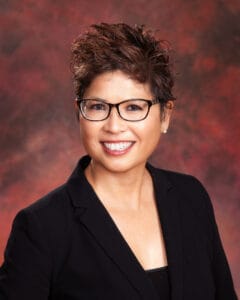Back at my day job following ASU+GSV 2021, I’ve been reflecting upon the sessions I was able to attend. This was my first time attending this conference. Originally designed for venture capitalists, developers, educational leaders, and entrepreneurs, this was a conference plentiful in big ideas, money, and networking.
I moderated a panel conversation of three edtech leaders regarding how they plan for technology sustainability in the wake of the current pandemic relief funds. We discussed the essential question: How can school districts plan responsibly so that they can use their additional IT funding wisely and successfully maintain their programs when the additional funding ends? The panel was based on our Digital Promise Sustainability Toolkit which I authored and was released this past summer. VILS’ very own William Pierce, Jefferson County Public Schools, (MO), Eileen Belastock, CETL Nauset Public Schools (MA) ) and Louis McDonald Fauquier County Public Schools (VA)) did a great job of sharing how they operationalized various aspects of the toolkit in their districts. The largest takeaways were that school systems/districts need to do careful planning with their Covid-19 relief funds so that the items they purchase have a lifecycle plan and all costs associated with the technology are considered and budgeted for. If they don’t do it they may find that they do not have funds, parts, or people to provide services to maintain the devices once the funding has gone away.
It was somewhat disappointing that our session was not attended by large numbers, but school district edtech leaders like Chief Technology Officers or Directors of Technology were not plentiful at ASU-GSV. It was heartening that some solution providers attended the session to gain an understanding of the process educational technology leaders go through when they make budget decisions regarding technology solutions. I wish more solution providers would work with CoSN members to understand how to best act as support and partner vs. treating us as just purchasers and consumers of their products.
As edtech leaders know, and the global pandemic most certainly amplified, there is nothing worse than teachers being offered free software and solutions without the district’s knowledge. Teachers may not understand that when a solution is not endorsed by the district/system, they may willingly be providing student data without the district’s or parent’s permission if they use it with their students. It puts districts into a very tough situation of having to say “no” to the solution once its use is discovered. Student data may be permanently lost to the company without the district’s knowledge. While the best intentions were there to assist school districts, through the massive change in learning that occurred in 2020 with free software, if there would have been some sort of agreement between edtech and the solutions provider market, it could have averted the situation when schools were flooded with freebies. At the same time, valuable decision makers’ time was being taken up with vendor management vs. allowing school system leaders to guide their schools through the difficult time of transitioning to remote or hybrid learning.
Could events like ASU+GSV help build relationships between solution providers and the educational consumer world that truly work toward what’s best for students, school districts, and solution providers? That’s something I would like to see grow out of ASU+GSV that could really help us all move forward.
LinkedIn Bio for Diane Doersch, CETL
CoSN Board of Directors: https://www.cosn.org/about/board/


